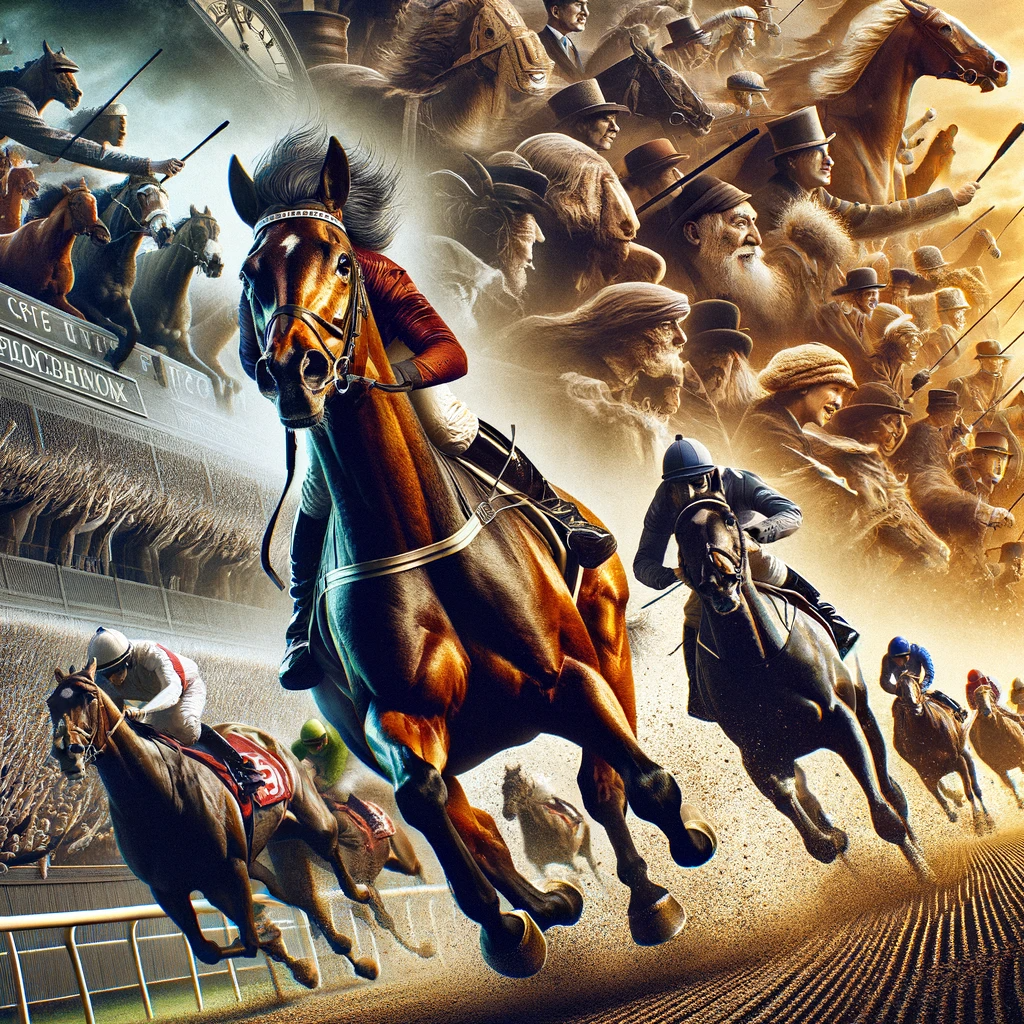Racing. The very word conjures images of wind whipping through your hair, the ground trembling beneath your boots, and a thousand pounds of equine muscle hurtling towards you, nostrils flared and mane a blur. This heart-pounding spectacle, etched in our collective memory, is more than just a sport; it’s a tapestry woven from millennia of human history, and one facing a chorus of public scrutiny today.
But how did we get here? How has public opinion evolved through the ages, from roaring applause to hushed concerns? Today, we embark on a historical journey, tracing the fascinating story of racing’s public image – a story rife with moments of celebration, controversy, and a relentless quest for progress.
From Pharaohs to Purses: A Global Tapestry of Racing’s Enduring Allure
Our tale begins not in the manicured paddocks of modern racetracks, but in the dusty arenas of ancient civilizations. Chariots carved across Mesopotamian plains, their drivers vying for divine favor and earthly glory.
In Egypt, Pharaohs raced magnificent stallions, forging a link between equine prowess and divine lineage. The Roman Empire thundered with the spectacle of chariot races, a pulsating heartbeat of entertainment for its citizens.
Racing wasn’t merely a sport; it was a crucible of courage, a testing ground for both man and beast, and a potent symbol of societal values.
Fast forward to the medieval tapestry of knights jousting, their lances seeking honor and the fair maiden’s hand. Across the vast Mongolian steppes, nomadic warriors raced on sturdy ponies, their horsemanship woven into the fabric of their cultural identity.
In the Americas, tribesmen raced swift mustangs, honing their skills for hunting and warfare. This global tapestry showcases the universality of racing’s allure, its ability to transcend borders and cultures, speaking a language of competition, skill, and the unyielding spirit of conquest.
The Birth of the Thoroughbred: A Sporting Revolution with Enduring Popularity
The 17th century witnessed the birth of the thoroughbred, a meticulously bred equine masterpiece crafted for speed and endurance. England became the crucible of this revolution, with Newmarket hosting the first official horse race in 1666. The Derby, established in 1780, stands as a testament to this tradition, its name synonymous with equine excellence and sporting prestige.
Across the Atlantic, America embraced the thoroughbred spirit with gusto. From Kentucky’s bluegrass pastures to Maryland’s rolling hills, racing blossomed, becoming a cornerstone of American culture. The Kentucky Derby, inaugurated in 1875, became a national spectacle, its mint juleps and thundering crowds painting a vibrant picture of Southern hospitality and sporting passion.
However, public opinion toward the sport wasn’t always a monolith of unbridled enthusiasm. Concerns about animal welfare and gambling have peppered the sport’s history, often erupting in moments of public outcry.
In the 19th century, England’s Anti-Cruelty Society campaigned against excessive use of the whip, leading to stricter regulations. Similarly, concerns about gambling spurred anti-racing movements in the United States, culminating in bans in several states throughout the 20th century.
A Paradigm Shift: Public Perception of Racing in the Information Age
The late 20th and early 21st centuries witnessed a significant shift in public opinion. The rise of social media and increased access to information amplified concerns about animal welfare, particularly regarding injuries, fatalities, and the post-racing fate of horses.
Investigative reports and documentaries exposed the darker side of the industry, leading to calls for greater transparency and stricter regulations. This critical public scrutiny isn’t without its positive outcomes.
The racing industry has responded by implementing a range of reforms, including medication restrictions, improved safety protocols, enhanced post-racing life initiatives, and the rise of organizations like the Racing Integrity and Fairness Foundation and the Thoroughbred Aftercare Alliance dedicated to equine welfare.
Can the Racing Regain its Full Gallop? Embracing Transparency and Ethical Evolution
Today, public opinion towards racing stands at a crossroads. While appreciation for the sport’s history, tradition, and economic impact remains, ethical concerns continue to resonate with the public.
Industry stakeholders must navigate this complex landscape with transparency, proactive reform, and a genuine commitment to animal welfare. Embracing data-driven approaches, such as detailed fatality reporting and injury analysis, can foster deeper public trust and guide targeted reform efforts.
Increased access to racing facilities and open communication about practices can dispel misinformation and foster understanding. Investing in equine research and welfare initiatives can showcase the industry’s progressive stance and commitment to ethical advancement.
Championing a Brighter Future: Where Does the Next Furlong Lead?
The thunder of hooves echoes not just with the ghosts of history, but with the promise of a future where the thrill of competition coexists with unwavering commitment to animal well-being. Can racing rewrite its story?
The path forward demands continuous introspection, acknowledging the lingering concerns and embracing a spirit of transformative action. From racetracks to research labs, from breeding farms to advocacy groups, a collective effort is required.
Only then can the thunder of hooves become a unifying anthem, one that celebrates the wonder of these magnificent creatures while ensuring their well-being is placed at the heart of every stride.
But the question remains: will the industry choose the path of genuine reform and transparency, or will the thundering applause for racing’s grandeur be drowned out by the muffled echoes of missed opportunities to prioritize the welfare of its equine partners?
The future of thoroughbred racing hangs in the balance, and the answer lies not in the past, but in the collective commitment to a brighter, more ethical future for horses and humans alike.

